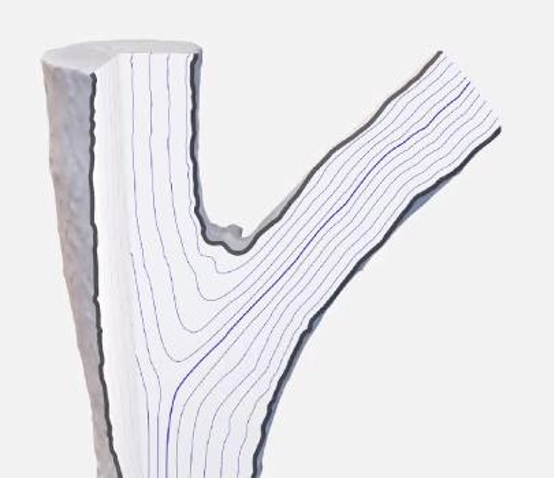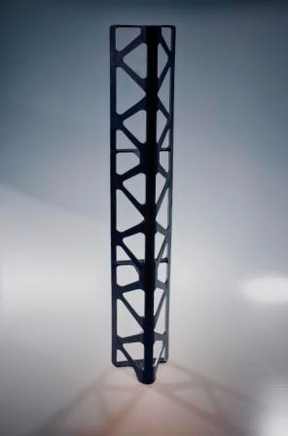The additive industry is dynamic, with new techniques introduced frequently. Ethan Escowitz, CEO and founder of Arris Composites, for example, developed a technique called additive molding. This proprietary process combines additive manufacturing and high-volume molding technologies to create composite materials made of continuous fiber-reinforced thermoplastics. The technology has broad benefits across many applications and markets, enabling smaller, thinner, lighter, and stronger products. We recently interviewed Ethan while he was at his manufacturing facility (hence the interesting background noises on the audio) about this technology and here are highlights from the interview.
Additive molding is a manufacturing technology that can make products that are stronger or lighter and with the desirable qualities found from a molding manufacturing process. Additive molding is scalable and energy-efficient with minimal scrap. Parts made from this process exhibit high quality, high dimensional accuracy, good repeatability and high surface quality.
This process uses materials typically associated with the aerospace industry. The process aligns material fibers, resulting in strength that can be higher than titanium while lighter in weight. The company’s customers typically are not trying to make their products stronger, rather they are looking for smaller and less weighty products.
Additive molding combines the two worlds of aligned fiber and continuous composites that developed in the aerospace industry. That process primarily consisted of hand lay-ups such as that used in automotive and boat building. The aligned fibers go through a process similar to injection molding.
The additive molding manufacturing technology is broadly applicable from aerospace, automotive parts, to a range of industrial applications. However, in the first few years of Arris Composites history, the area that had the greatest focus was the consumer product space, including consumer electronics and recreational equipment. This market typically has a high product refresh cycle, and the amount of qualification is favorable for a new company trying to get production online to make a profitable business.
With embedded electronics, putting glass fiber into carbon fiber composites is used to create an antenna window. These combined materials deliver one of the highest strength-to-weight ratios. The company also works with carbon fiber composites in other areas. With such materials, the company can develop optimal functionality for the antennas.
According to Escowitz, the process to make such materials is a synergy. “The molding is key and the strength is delivered through a synergy of two steps. The first step is where we form the continuous composite material that creates what we can think of as a near net shape composite part with aligned fibers running through the part to reinforce the part optimally. But the consolidation of that material under high temperature and pressure is what gives us the consolidation and the minimal void content that makes this process exciting.”
As far as addressing environmental concerns, Escowitz says that sustainability can be broadly considered in terms of three key areas: the materials coming in, the processing, and what happens at end of life.
For materials coming in, Arris Composites works primarily with thermoplastic composites where there has been a significant amount of development for more sustainable resins and chemistries. For the fibers, the company works with carbon fiber, glass fiber, and natural fibers.
Scalability goes hand in hand with reducing the energy used to make any single part. In addition, the company developed its system to meet the cost and performance threshold of mass-market industries, which also improves the sustainability of the manufacturing process.
At the end of life, the company works with thermoplastic composites that are recyclable in a number of ways. As Escowitz notes, composites with thermoset materials have been challenged with recyclability because the thermoset material is not really recyclable. “You can burn off that resin system and try and use the fiber with a new resin system the second time but it’s very energy intensive.”
The existing development work that’s been done to recycle thermoset composites is through pyrolysis and burning off all of the resin. Escowitz notes that you might be able to reclaim some of the fiber through that burn off process, but you’re might be burning off half of the volume of the material to reuse the other half. “And that has been done with some of the carbon fiber composites because there’s a high embodied energy in that carbon fiber material. So, it’s worth putting all that energy into reclaiming it. Obviously, the thermoplastic composites, you’re not actually recycling it because you can simply reform it into a generation part in some instances without a recycling processing step.”
Thermoplastic composites are chopped up and then remolded as a chop fiber composite. This technique reduces the mechanical performance about 10x but it gives Escowitz and his team the ability to take a batch of products that are a similar resin system and recycle them with a bit of downgrading but still fairly efficient.
“We’ve also developed and piloted a method where we can take our continuous fiber composite first-generation part and in a cradle-to-cradle approach use it as the feed stock for a second generation product, where if working with our customer we can anticipate their program to recycle products that they have come back. If they can supply back to us the component that we provided to them, we can look at using it as the feedstock for a second generation product in these circumstances where we will have a high volume of the same parts coming back with a high degree of regularity like you do in consumer products where there’s a pretty well-known lifecycle.”
One of the tradeoffs to consider with material recycling is weight reduction. In some cases, the lower weight is worth the cost of energy to recycle.
Arris Composites offers a software program called Specific Design. This program helps design engineers create their parts. It helps engineers consider the effects of wall thicknesses, overhangs, and minimum feature sizes.
With the stronger-than-metal materials, the wall thicknesses can be smaller using the company’s molding methods. Dimensions are accurate with fine features.
Specific design comes from the concept that you can add different materials, whether it’s metal or ceramic or plastic to make a composite material. The program helps designers not only create a composite material in terms of the fiber and resin, it also helps them position that composite material, essentially creating a composite of composites.
Specific design lets users specify the functionality they want in different regions of the same part. “So, if you want to have a device with a really tough energy absorbing corner as well as an antenna window and then some wire running through a specific area, all of these can coexist within the same part,” notes Escowitz. “Instead of having separate discrete parts designed and then created through different manufacturing steps that are then assembled together, we can make them in a single manufacturing step which also has benefits in production. Obviously shortening the assembly line increases the speed of the manufacturing process.”
Whenever a new manufacturing technology comes along, it’s important to step back and look at the products and the product architecture in terms of the legacy that is tied to the limitations of how it had to be produced, and can you perhaps undo some of those assumptions. “When composites first came to aerospace, there was a term called black aluminum where you would see a composite manufacturer, make a part with features that were designed for aluminum manufacturing and be produced at sometimes a greater cost in a composite manufacturing method just because they’re recreating the legacy even though it wasn’t what was practical for the new manufacturing method.”
It’s always a great thing when some new technology comes along that helps spur you to think of something a little different and in many ways improve it just because you’re thinking of it differently.
Filed Under: Molding • injection molding components, Make Parts Fast, PODCASTS







